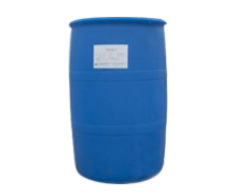Ionic surfactants ionize in water. If they form positively charged hydrophobic groups, they are called cationic surfactants; If a negatively charged hydrophobic group is formed, it is called anionic surfactant. If there are anion and cation groups in a molecule at the same time, that is, after dissolving in water, it generates two kinds of charges: positive charge and negative charge, it is called amphoteric surfactant. Nonionic surfactants do not ionize in water and are electrically neutral.

Surfactant is a kind of substance that can significantly reduce the surface tension of solvent and change the interface state of the system, resulting in a series of effects, such as wetting or anti wetting, emulsification or demulsification, dispersion or aggregation, foaming or defoaming, solubilization or water repellent, moisturizing or dehumidification, antistatic and anti-corrosion.
From the structural characteristics, all surfactants are composed of polar hydrophilic group and nonpolar hydrophobic group, so they are amphiphilic (hydrophilic and lipophilic) molecules. There are many kinds of hydrophilic groups, while hydrophobic groups are generally composed of hydrocarbon atoms (hydroxyl), fluorocarbon and polysiloxane. Because the changes of hydrophilic groups in type and structure are much more important than hydrophobic groups in the properties of surfactants, surfactants are generally classified based on the structure of hydrophilic groups, which can be divided into ionic and non-ionic types.
There are mainly the following types. Fatty carboxylic acid esters: the chemical formula is rcoom (R is alkyl, the carbon number is between 8 ~ 22, and M is Na and K), which has good resistance to hard water and wetting ability.
Fatty alcohol sulfates: the chemical formula is r-oso3m [M is Na, K, n (ch2ch2oh) 3, and the carbon number in alkyl R is 8 ~ 18]. They have good foaming ability and washing performance, are stable in hard water, and their aqueous solution is neutral or slightly alkaline.
Alkyl sulfonates and alkyl aryl sulfonates: the chemical formulas are r-so3m and R-R '- so3m respectively (M is Na and K, the carbon number in alkyl R is 8 ~ 20, and R' is benzene ring). They are easily soluble in water, have good foaming, wetting, emulsifying and dispersing effects, and do not hydrolyze in acidic solution.
Fatty acyl peptide condensates: the chemical formula is r1conhr2cooh (the carbon number of R1 is 8 ~ 18, and R2 is the aliphatic group of amino group). It is stable under weak acid, its salt is stable to hard water, and has good foaming and washing ability.
Phosphates: the chemical formula is r-opo3m2 (R is alkyl, M is Na, K). It has good stability to acid and alkali, is easy to be biodegradable, has good emulsification and washing ability, and can be used as antistatic agent and corrosion inhibitor.